Reference tracks are pivotal in the music production process, serving as invaluable tools for those of you aiming to achieve a more pristine and professional sound.
They can help polish your sound design skills, master the art of mixing, and understand the intricacies of arrangement.
As well as unlock the door to endless creative innovation, of course.
In today’s article, we’ll be breaking down everything you need to know in order to utilize reference tracks like an expert.
We’ll be covering:
- What reference tracks are & how to use them properly ✓
- Their importance in music production ✓
- How to choose the right reference track ✓
- Strategic uses of reference tracks ✓
- Sound design and mixing techniques ✓
- Advanced tips & tricks ✓
- Common mistakes when using reference tracks ✓
- The mastering stage ✓
By the end of this article, you’ll be equipped with all the necessary knowledge in which to utilize reference tracks like a professional.
Which will, in turn, make sure your music captures the attention of your listeners and stand out in a crowded field.
So, let’s dive in…
Table of Contents
- What Is a Reference Track?
- The Importance of Reference Tracks in Music Production
- Reference Tracks: Genre Considerations
- Analyzing High-Quality Sound & Sonic Characteristics
- How to Choose Reference Tracks: Tips & Tricks
- Strategic Use of Reference Tracks
- Utilizing Reference Tracks for Sound Design
- Techniques for Mixing with Reference Tracks
- Reference Track: Final Thoughts
What Is a Reference Track?
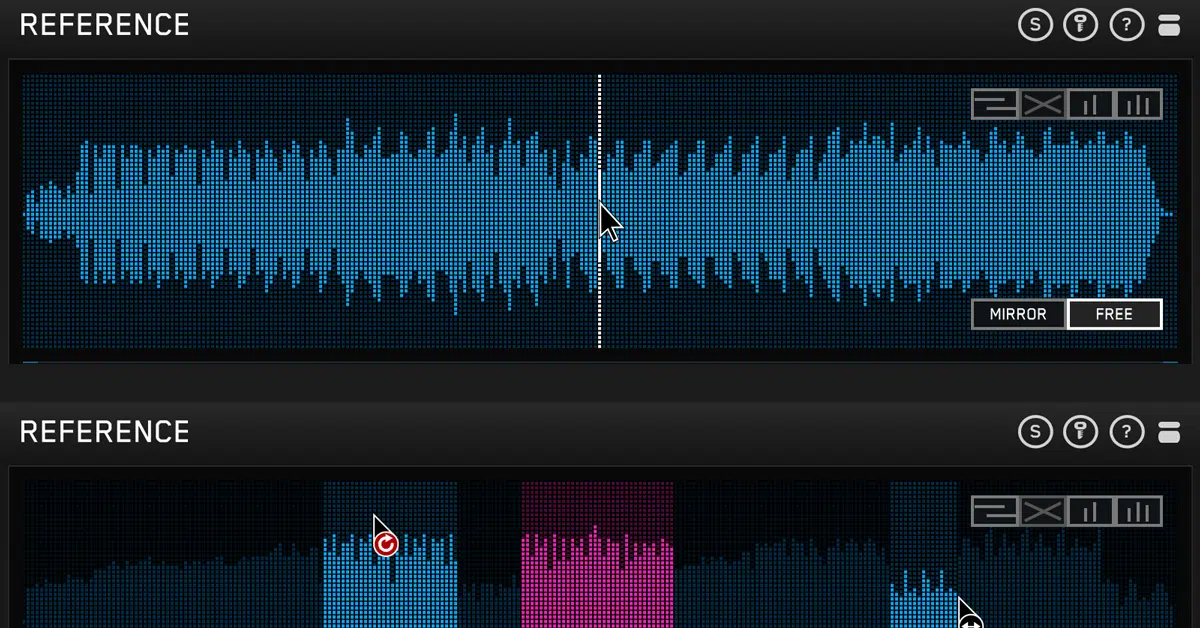
Reference tracks are pre-existing, professionally mixed, and mastered pieces of music that serve as a benchmark for those striving to attain a high level of quality in their own songs.
Regardless of which genre you produce, the application of a reference track can be not only beneficial, but invaluable.
It operates as a detailed guide and can help you navigate the exciting world of sound design as well as enhance your workflow.
This ensures your tracks are professional, competitive, and industry-standard.
The technique of using reference tracks is widely acknowledged and revered for its efficiency in achieving professional-sounding music.
It is not just about replication but gaining insights into:
- The subtle nuances of one song
- Chord progressions
- Tonal balance that contribute to the distinctiveness of a track
It serves as an instructive tool 一 enabling you to analyze and understand the elements that contribute to the success of a track.
No matter what specific genre beats in which you produce, a reference track can help enhance your workflow and make your music truly shine.
Remember that it’s always advised to check out a few reference tracks in order to discover new and exciting techniques.
The Importance of Reference Tracks in Music Production
In the intricate world of music production, the use of reference tracks has established itself as a crucial practice.
As we just touched upon, reference tracks act as a reliable blueprint; helping you to achieve a sound profile that resonates with listeners and stands up to industry standards.
Their importance lies in several key factors, such as:
-
Benchmarking Quality
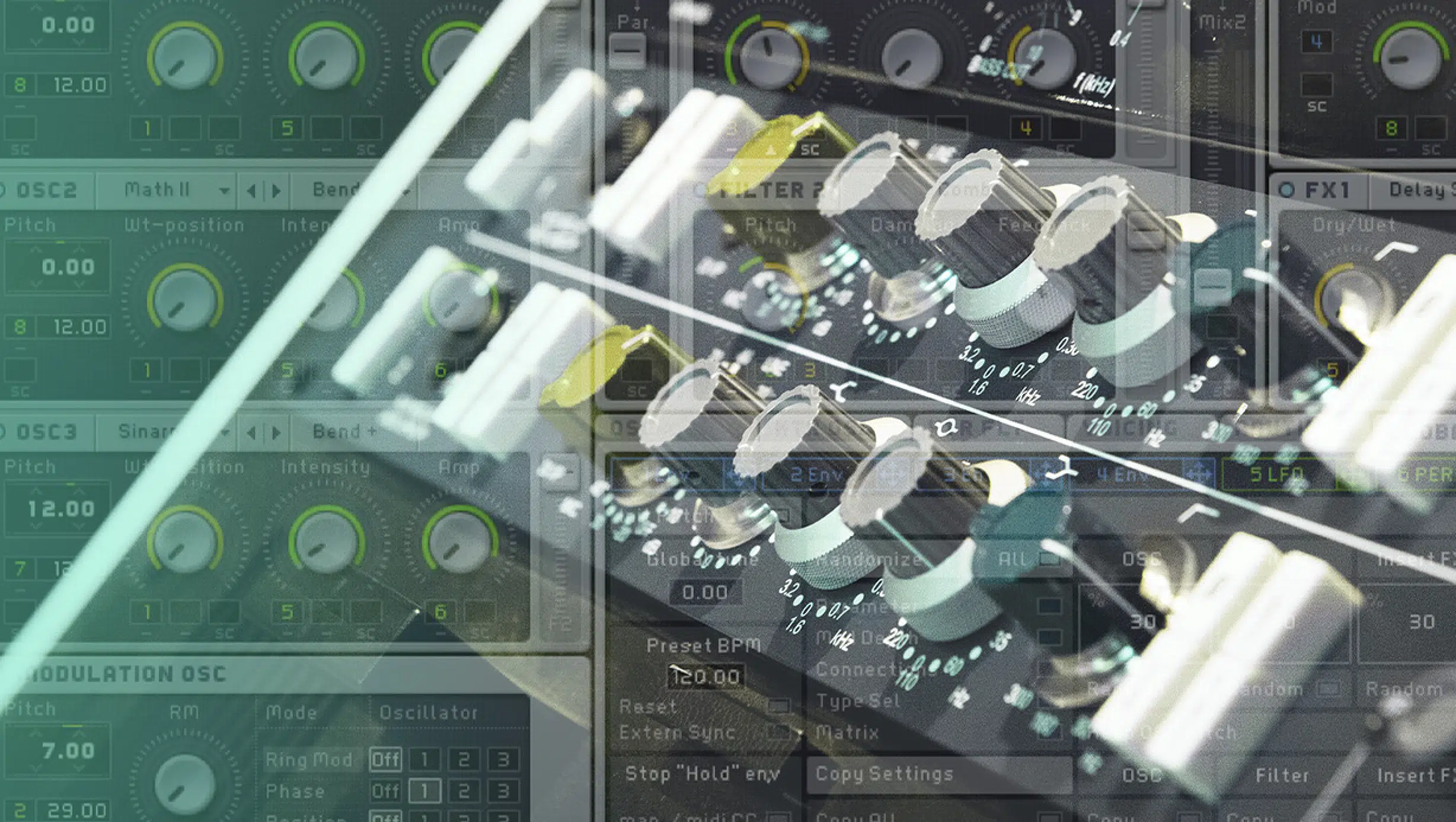
Reference tracks serve as a standard of quality, providing a clear target for producers to match or exceed in terms of mixing, sound design, and overall audio balance.
-
Efficient Workflow
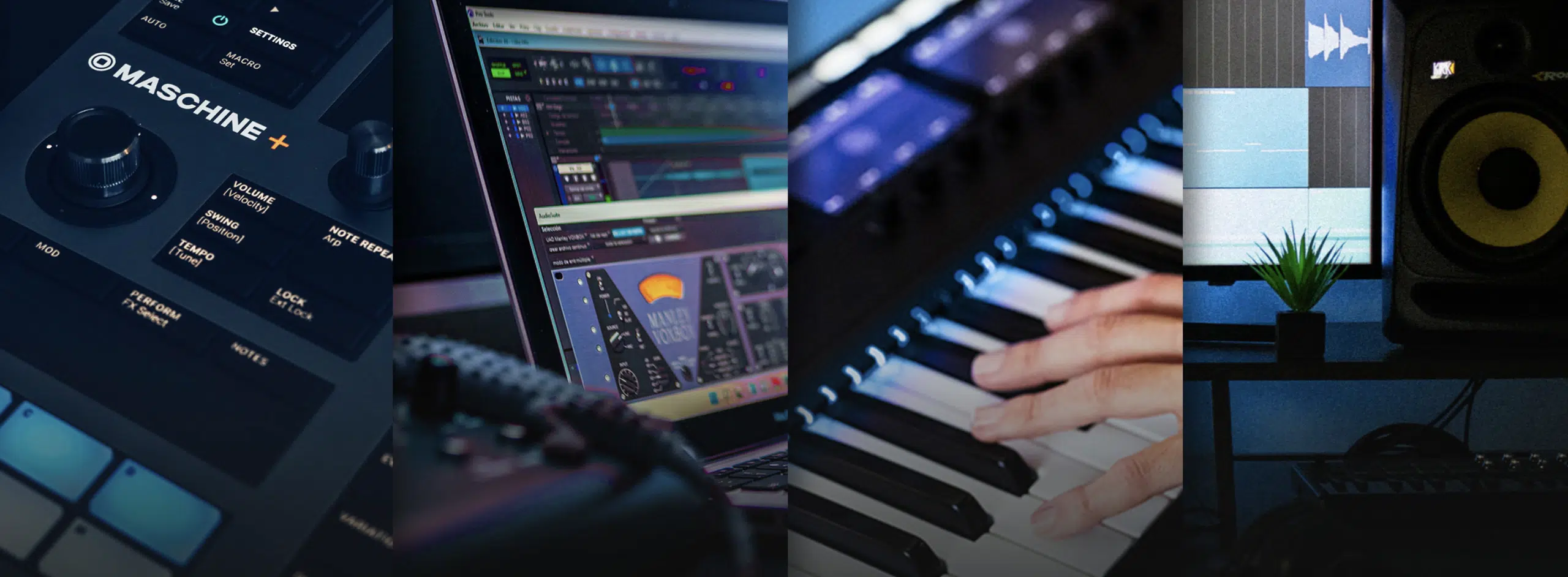
By offering a solid point of comparison, reference tracks streamline the production process 一 helping you to make more informed decisions. As well as reduces the time and effort spent on revisions/adjustments.
-
Balanced Sound Spectrum
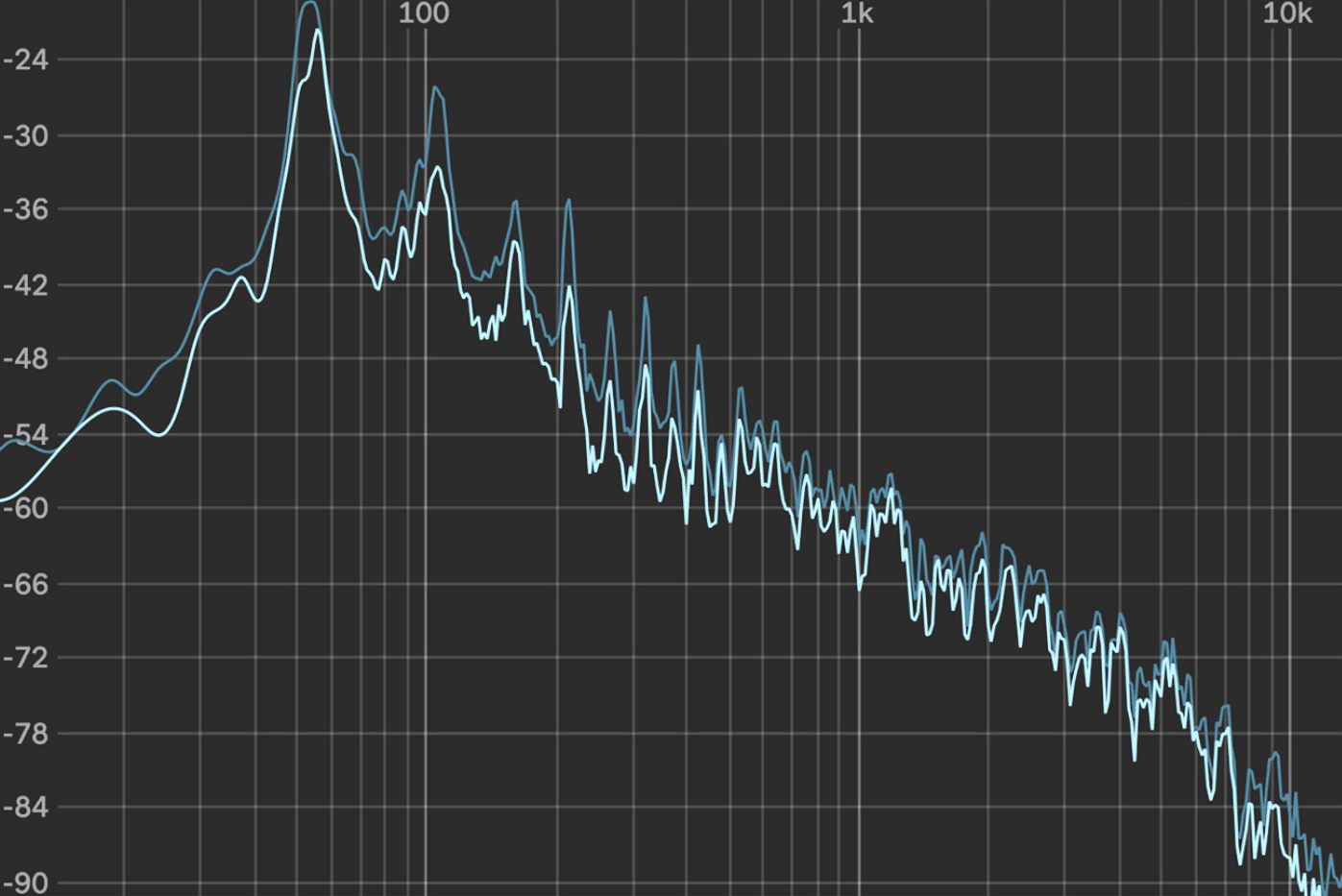
Utilizing reference tracks assists in achieving a balanced frequency spectrum. It helps you to make sure that all elements of the track (from bass to treble) are harmoniously blended and no frequency range is overpowering or neglected.
-
Genre Compatibility
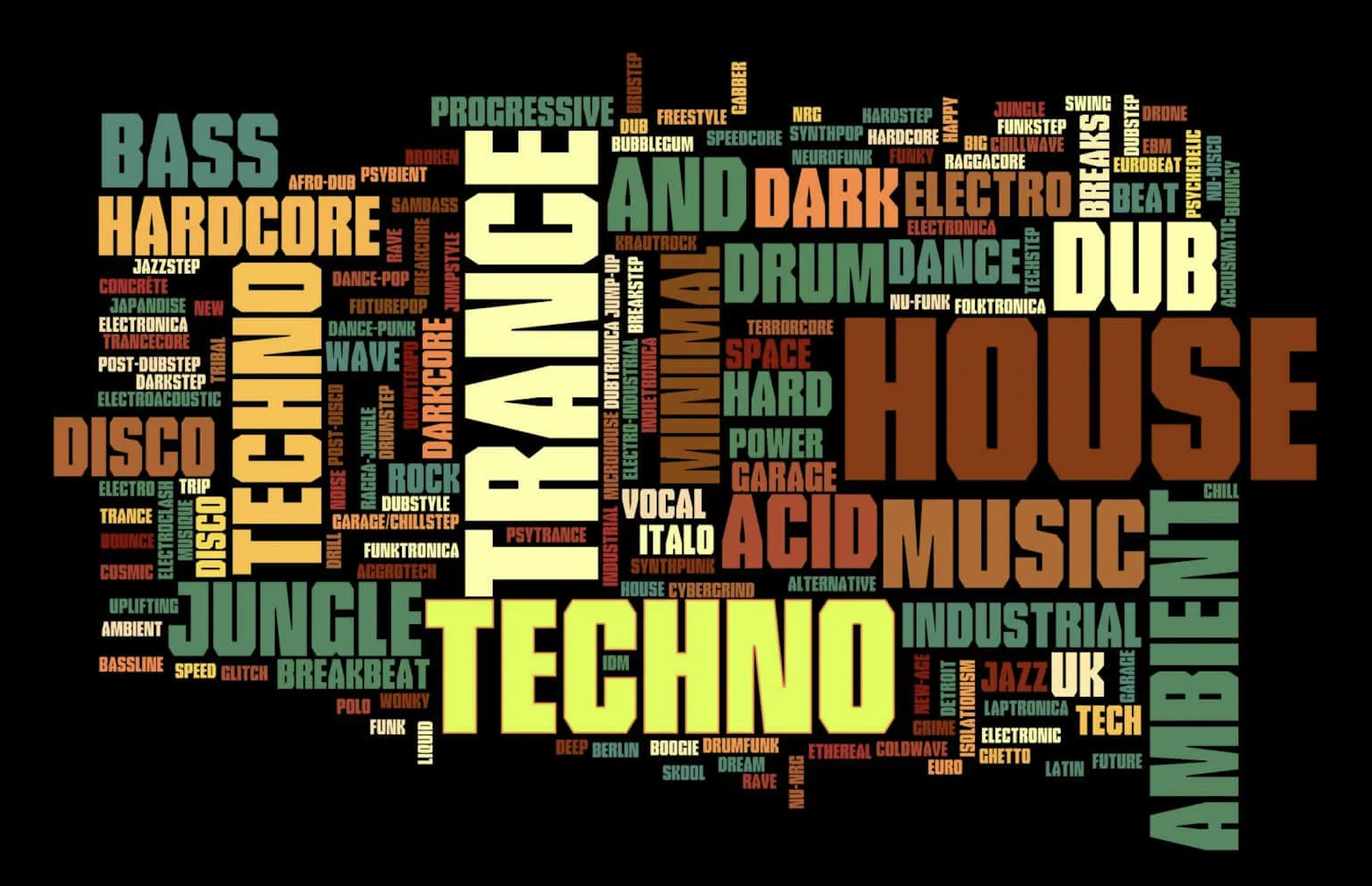
Reference tracks aid producers in maintaining genre-specific characteristics. They can help you ensure that your track aligns with the stylistic norms and expectations of that specific genre (e.g., lofi, pop, hip-hop, trap, R&B, rock, etc.).
-
Creative Inspiration

While reference tracks provide technical guidance, they also serve as a source of inspiration. They can help spark new musical ideas and explore different creative avenues.
Understanding and harnessing the benefits of reference tracks can significantly elevate the level of your music production.
Which will ultimately lead to more refined, impactful, addicting tracks.
Reference Tracks: Genre Considerations
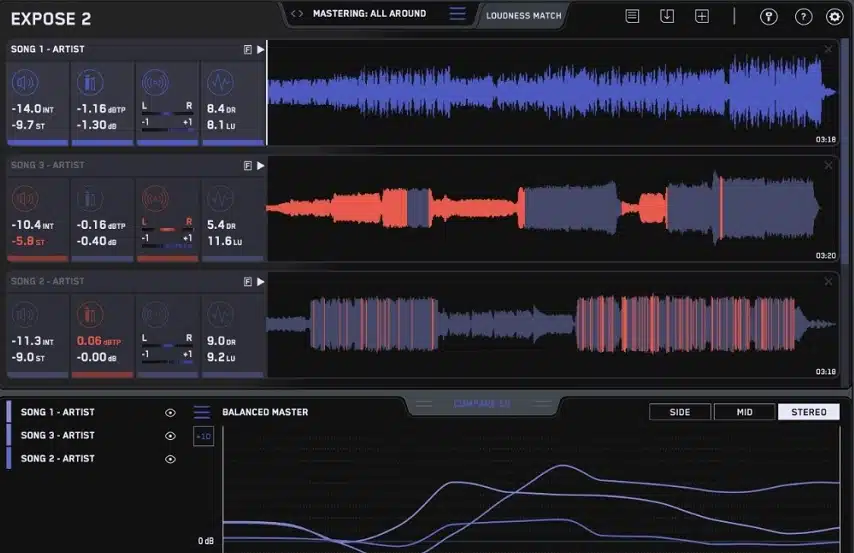
Selecting the appropriate reference tracks is a critical step that demands thoughtful consideration and a strategic approach.
So, let’s talk about the various aspects needed when choosing reference tracks that align with your genre, exhibit high-quality sound, and contain sonic characteristics that match your unique style.
When venturing into the selection of reference tracks, genre consideration stands paramount.
For producers immersed in electronic music, hip-hop, or trap, aligning with a reference track that embodies the key elements of that specific genre is vital.
Each genre, with its intriguing rhythmic patterns, chord progressions, and sonic textures, requires a careful examination of potential reference tracks.
This ensures that the chosen piece accurately reflects the genre’s characteristics and serves as an effective guide during the production process.
In electronic music, for example, attention to the following is crucial:
- Synthesizer tones
- Drum patterns
- Atmospheric elements is crucial
Similarly, hip-hop and trap music demand a focus on rhythm, vocal delivery, and the intricacies of beat production.
NOTE: Genre consideration is not just about mimicry, but about understanding and internalizing the core elements that define a genre.
This knowledge, coupled with the insights gained from reference tracks, will help you create tracks that are both authentic and innovative.
Plus, ensure that your tracks will be desirable and alluring.
Analyzing High-Quality Sound & Sonic Characteristics
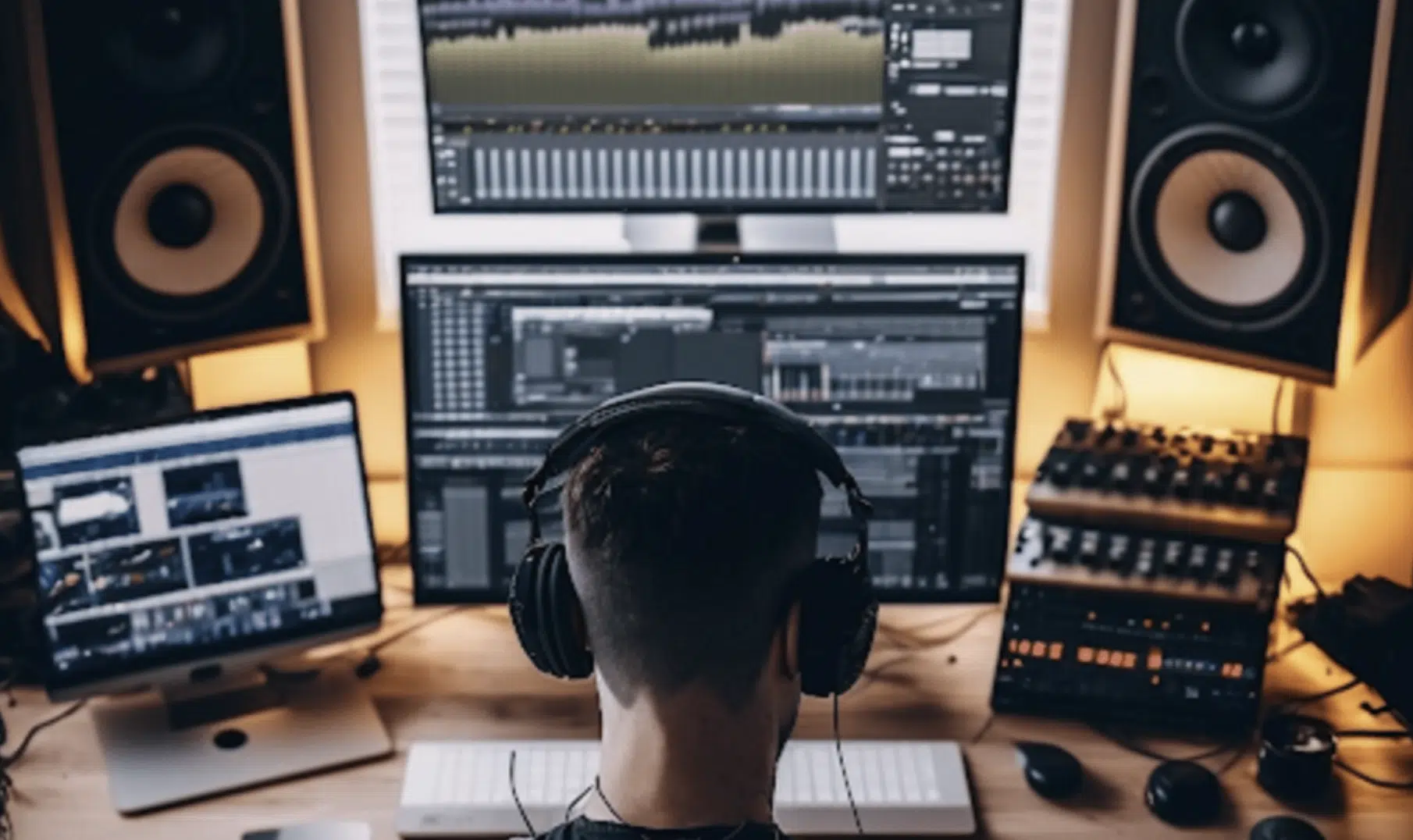
Discerning the quality of sound is a pivotal step in the selection process.
A reference track should exemplify sonic excellence, providing a template for clarity, balance, and depth.
Referencing the frequency spectrum, dynamics, and spatial characteristics allows you to analyze the standards that you should aim for.
Understanding the harmonic content, transients, and stereo imaging of a reference track can be highly informative.
It gives insights into how various elements interact within a mix 一 helping to create a sound that is cohesive and harmonically rich.
Focusing on the subtleties of a high-quality reference track can uncover the techniques used by professionals in:
These insights are invaluable for emulating the sonic characteristics that contribute to a polished and captivating sound.
Meticulous analysis of high-quality sound and sonic characteristics in reference tracks sets the groundwork for achieving professional standards in your own songs.
This way, you can make sure each element is optimized for maximum impact.
How to Choose Reference Tracks: Tips & Tricks
Choosing the right reference track(s) is a pivotal step in the music production process, acting as a roadmap to guide your mixing, sound design, and overall sonic texture.
Here are some tips and tricks in which to choose the ideal reference track(s) for you.
-
Analyze the Genre and Style

Start by considering the specific genre and style of the music you are producing.
For instance, let’s say you’re working on a trap track…
You might want to refer to tracks by artists like Travis Scott or Migos who are known for their distinctive trap sound, characterized by hard-hitting beats and atmospheric synths.
-
Examine Sonic Characteristics
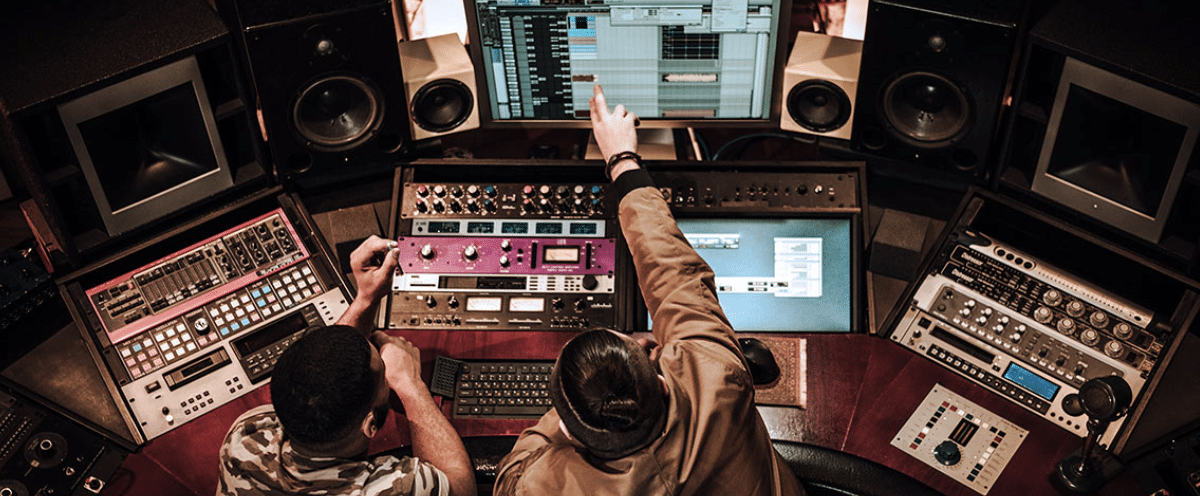
Listen closely to the sonic characteristics of potential reference tracks.
For an electronic dance music (EDM) track, you might analyze tracks by Martin Garrix or Avicii, paying attention to the:
- Clarity of the kick drum
- Crispness of the snare
- Brightness of the synthesizers
These elements are vital in creating a track that can stand up to the competition in the EDM scene.
Believe me, even if you think you’re an expert in a certain genre, there is always huge benefits to analyzing the greats.
-
Consider the Track’s Success

Choosing tracks that have been commercially successful or critically acclaimed can be beneficial.
For example, if you’re producing a pop track, referencing a hit by Ariana Grande or Dua Lipa can provide insights into what elements make a track resonate with a wide audience.
From catchy hooks to well-balanced mixes, you can analyze and replicate it all.
-
Pay Attention to Mixing and Mastering Quality
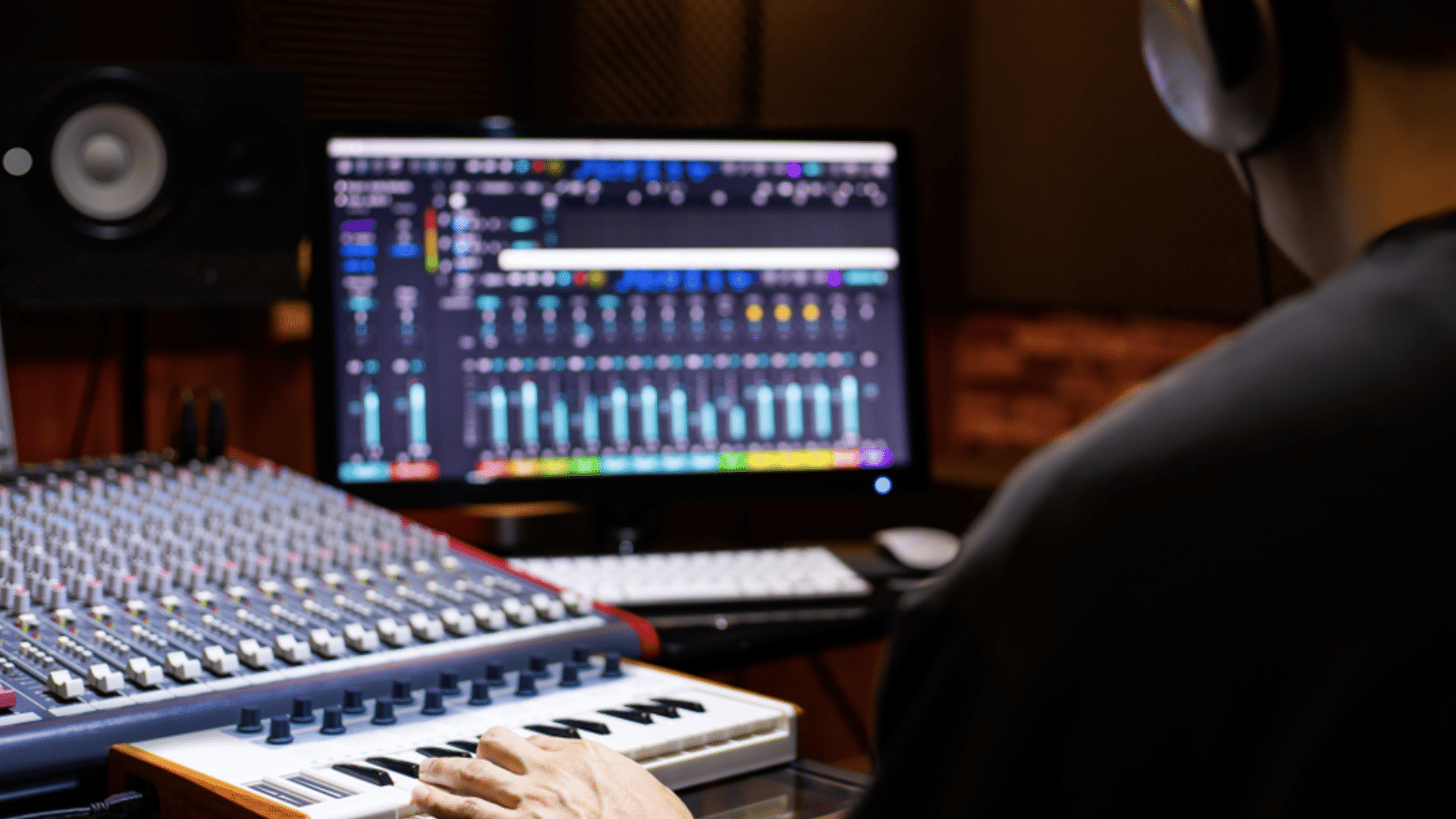
Examine the mixing and mastering quality of the potential reference tracks.
A well-mixed and mastered track, such as Daft Punk’s “Get Lucky” or Billie Eilish’s “Bad Guy,” can serve as an excellent standard for sound balance, stereo width, and dynamic range.
This will help you achieve a more polished and professional sound.
-
Evaluate the Arrangement & Structure

Analyze the arrangement and structure of reference tracks.
A rock track by Foo Fighters or Arctic Monkeys, with their well-crafted intros, verses, choruses, bridges, and outros, can offer valuable insights into effective song structuring and transitions.
In turn, it will ensure your track maintains listener engagement from start to finish.
-
Use Multiple References
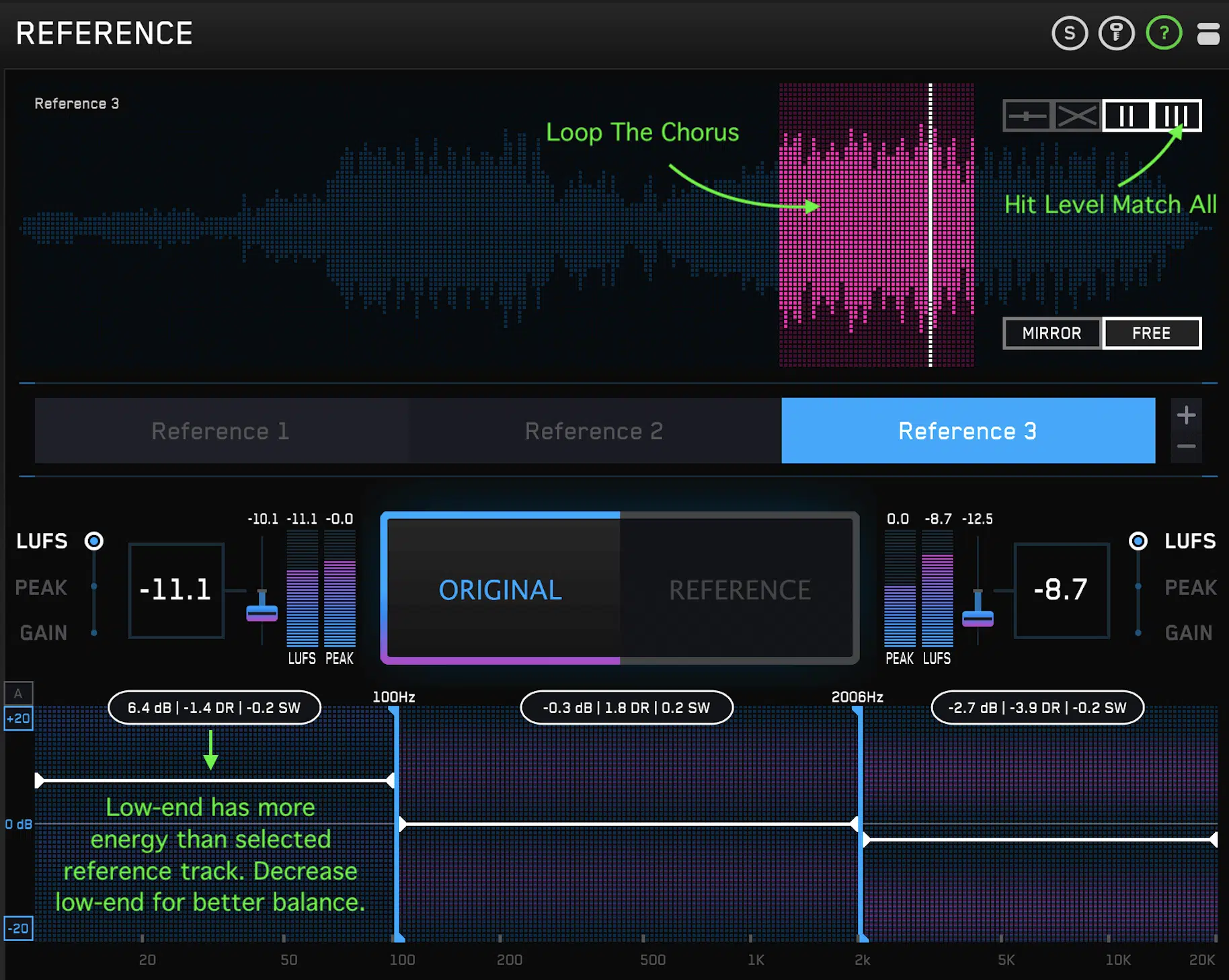
Don’t limit yourself to just one reference track.
Using multiple references, perhaps a blend of Tame Impala’s psychedelic soundscapes and The Weeknd’s smooth R&B vibes, can help you create a unique sound.
One that draws on various influences while still maintaining beautiful cohesion.
Choosing the right reference tracks involves a detailed analysis of:
- Genre
- Sonic characteristics
- Success
- Mixing quality
- Arrangement
- Diversity of references
By carefully considering these factors and examining specific examples, you can select reference tracks that will guide you in crafting a standout and professionally produced piece of music.
Strategic Use of Reference Tracks
Employing reference tracks strategically is a cornerstone of effective music production.
Now we’ll dive into the details of integrating reference tracks in the mixing process, different sound design considerations, and how to maintain balance in volume.
-
The Mixing Process
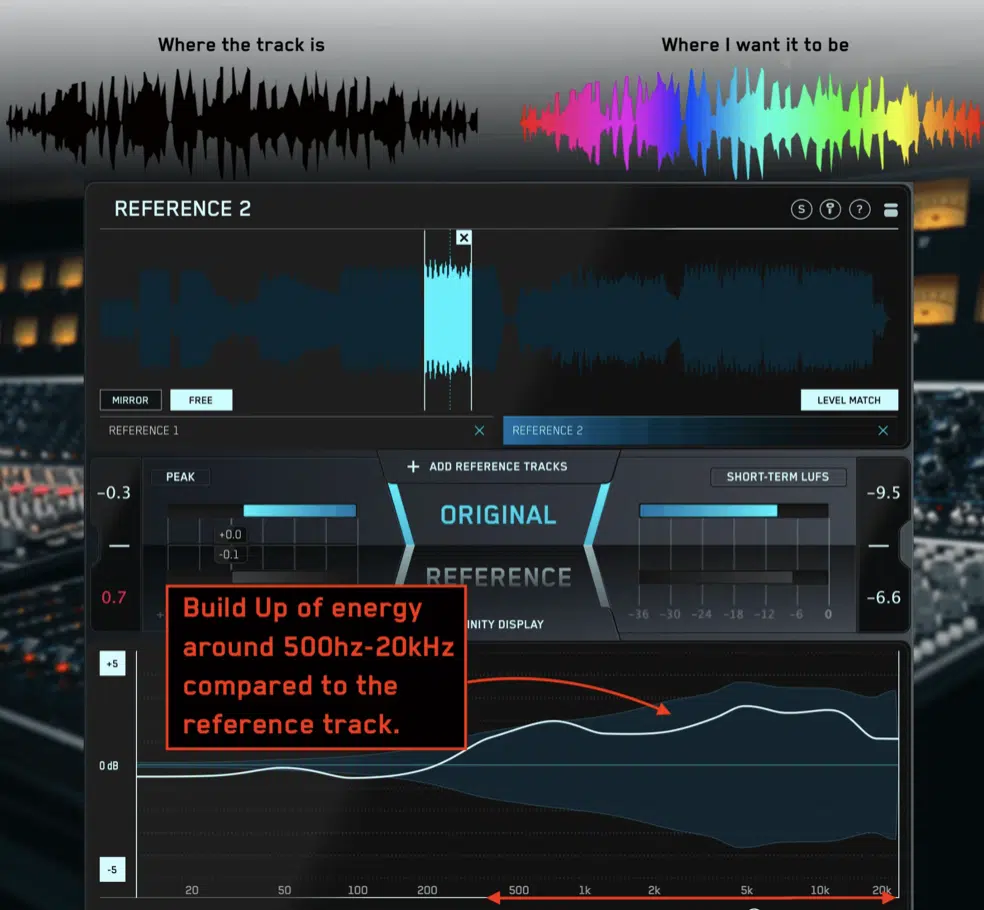
The mixing stage is where the magic happens, and integrating mixing reference tracks here is crucial…
I cannot emphasize this enough.
They can help guide you through the maze of EQ, compression, and spatial effects; ensuring each element sits perfectly in the mix.
By closely studying how professional mixing engineers utilize panning, level adjustments, and frequency allocations in reference tracks, you can seriously step your game up.
It’s known as your ‘mix reference song’ and it’s seriously important to select reference tracks that align with your intended outcome and preferred style.
This knowledge is pivotal for achieving a mix that is:
- Balanced
- Dynamic
- Harmonically rich
It is also vital to consider the arrangement map and how the reference track is structured/arranged.
Analyzing the progression of elements, transitions, and dynamics can significantly influence the outcome of the mixing process.
An in-depth understanding of the mixing process with reference tracks is indispensable.
It provides a clear path to achieving a mix that is not only technically sound but also emotionally engaging.
-
Sound Design Considerations
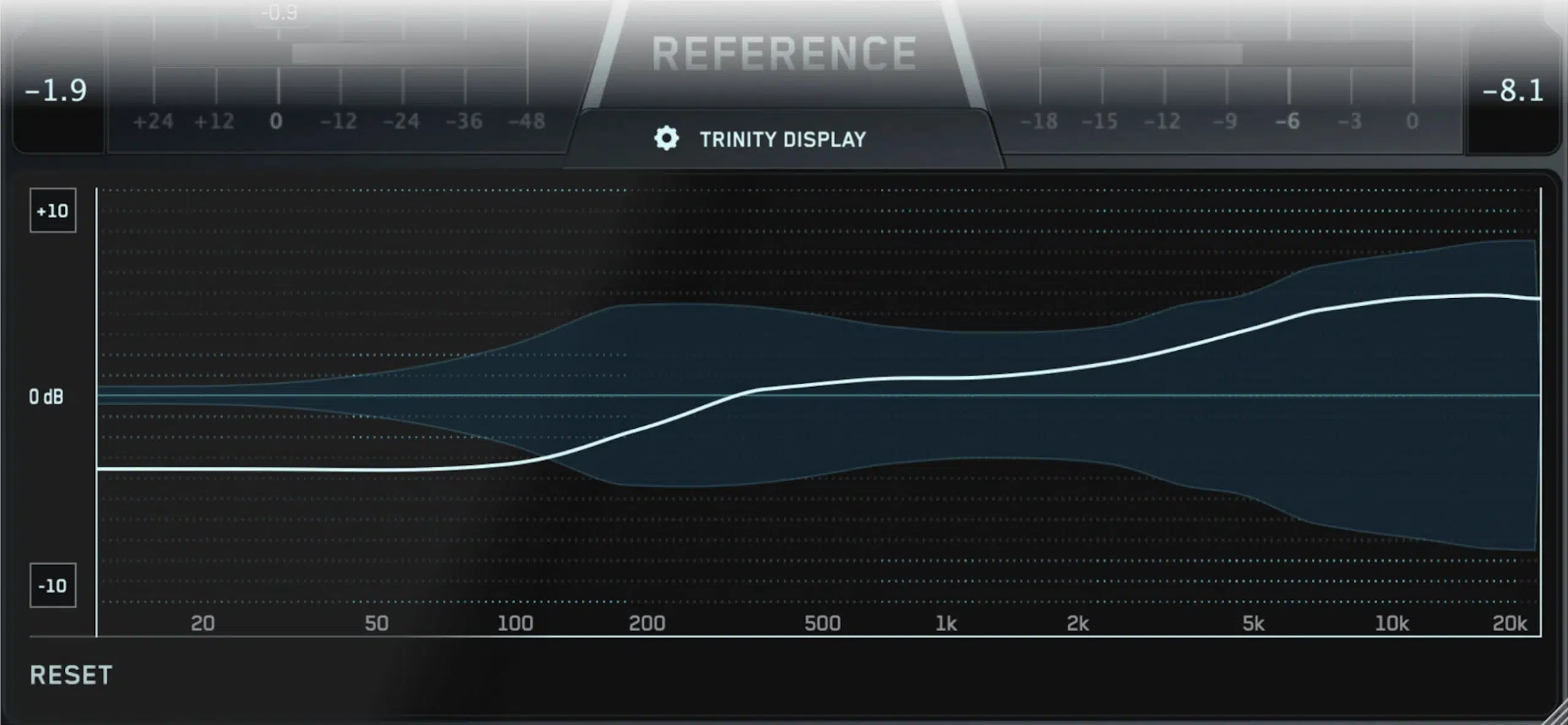
Sound design is the heartbeat of music production, and reference tracks are instrumental in shaping this element.
They provide beneficial insights into:
- Crafting lead sounds
- Developing punchy drums
- Creating atmospheric textures that define a track
Producers can dissect reference tracks to understand the layering of sounds, use of synthesizers, and application of effects.
This knowledge is essential for developing a sound design strategy that is innovative and genre-specific.
Equally important is the understanding of chord progression techniques.
Reference tracks can be a goldmine of information on how chords are structured, transitioned, and layered to create tension, resolution, and emotion.
Sound design considerations are at the core of utilizing reference tracks effectively.
They offer a glimpse into the world of professional sound crafting 一 enabling you to produce unique and impactful sounds.
-
Balancing Volume
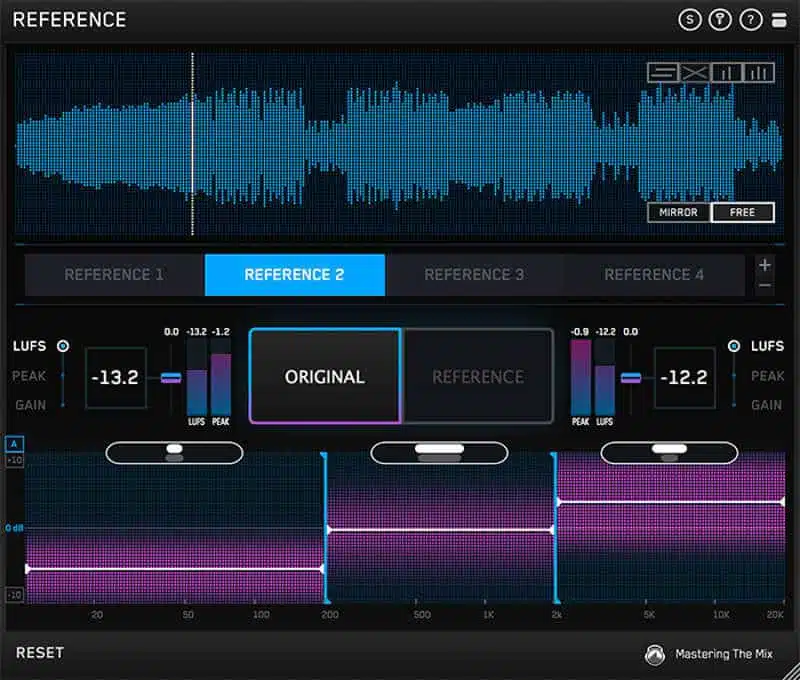
Balancing volume is fundamental in music production to maintain the mix’s dynamic range and avoid excessive loudness, which can compromise clarity and quality.
A well-balanced mix ensures each element coexists harmoniously, and utilizing reference tracks is key to achieving this.
These reference tracks provide professional insight 一 allowing you to analyze and emulate the balance of volume levels effectively.
Preservation of dynamic range is crucial, as a loud mix can result in a compressed range (making the sound less engaging).
Reference tracks offer insights into the appropriate dynamic range for different genres and styles.
Careful application of compression and limiting is essential to control dynamics and prevent an overly loud mix.
By using reference tracks to examine the use of compression, you can adjust your mix to maintain dynamic integrity.
Consistent monitoring of levels during the mixing process is also vital to avoid distortion and maintain quality.
Reference tracks act as a guideline for achieving appropriate levels.
PRO TIP
Frequent A/B comparisons between the mix and reference track are invaluable for identifying discrepancies and adjusting the balance of elements and overall loudness.
This ensures alignment with the professional standards of the reference track.
Also, considering genre specifics and audience expectations is fundamental, as different genres have varying expectations regarding loudness and the balance of elements.
Therefore, understanding these nuances is essential for producing a well-balanced and appealing mix.
Utilizing Reference Tracks for Sound Design
Sound design is an intricate component in the music production process, and one of my personal favorite topics.
So, now let’s discuss how to use reference tracks to create a lead sound, learn exciting chord progression techniques, incorporate sample packs, and spark new musical ideas.
-
Crafting Lead Sound & Punchy Drums

Crafting a compelling lead sound and punchy drums are integral elements of music production.
Using reference tracks as your guide can offer insight into how professional producers achieve a sound that cuts through the mix and captures the listener’s attention.
You can break down the techniques used to create a lead sound that is distinctive and impactful.
All you have to do is carefully and meticulously analyze:
- The frequency spectrum
- Layering
- Processing
Similarly, when you use reference tracks to study the dynamics, transient shapes, and tuning of drums, it can reveal the secrets behind a punchy and rhythmic sound.
The strategic use of effects (such as reverb, delay, and distortion) can significantly enhance the lead sound and drums.
Reference tracks provide a benchmark for the application of these effects.
They can help you to successfully achieve a sound that is both innovative and genre-specific, offering insights into the interplay between the lead sound and drums.
Analyzing the relationship between these elements in terms of frequency allocation, spatial positioning, and dynamics can significantly influence the overall sound design.
Crafting lead sound and punchy drums is a nuanced process.
And, when you use reference tracks, it will help you master that process in no time.
-
Chord Progression Techniques

Chord progressions form the harmonic backbone of a track, and reference tracks are a treasure trove of knowledge in this regard.
They offer insights into how professional producers structure chords to create tension, resolution, and emotion.
Analyzing the chord progressions in reference tracks can reveal the techniques used to create harmonic richness and diversity.
In order to understand how chords are created and transitioned, you can use reference tracks to study:
- The voicings
- Inversions
- Modulations
Additionally, reference tracks provide a glimpse into how chord progressions interact with other musical elements.
Understanding the relationship between chords, melody, and rhythm is pivotal for producing a track that is harmonically cohesive and emotionally resonant.
When using reference tracks, it is also essential to consider the genre-specific nuances of chord progressions.
Reference tracks offer insights into the harmonic structures prevalent in various genres 一 allowing you to incorporate stylistic elements that characterize electronic music, hip-hop, trap, etc.
Looking into chord progression techniques through the lens of reference tracks can significantly enhance your harmonic abilities.
It will help you create beats that are captivating, engaging, and professional.
Side note, if you’re looking for the most innovative, mind-blowing chord progressions in the game, look no further.
-
Using Sample Packs
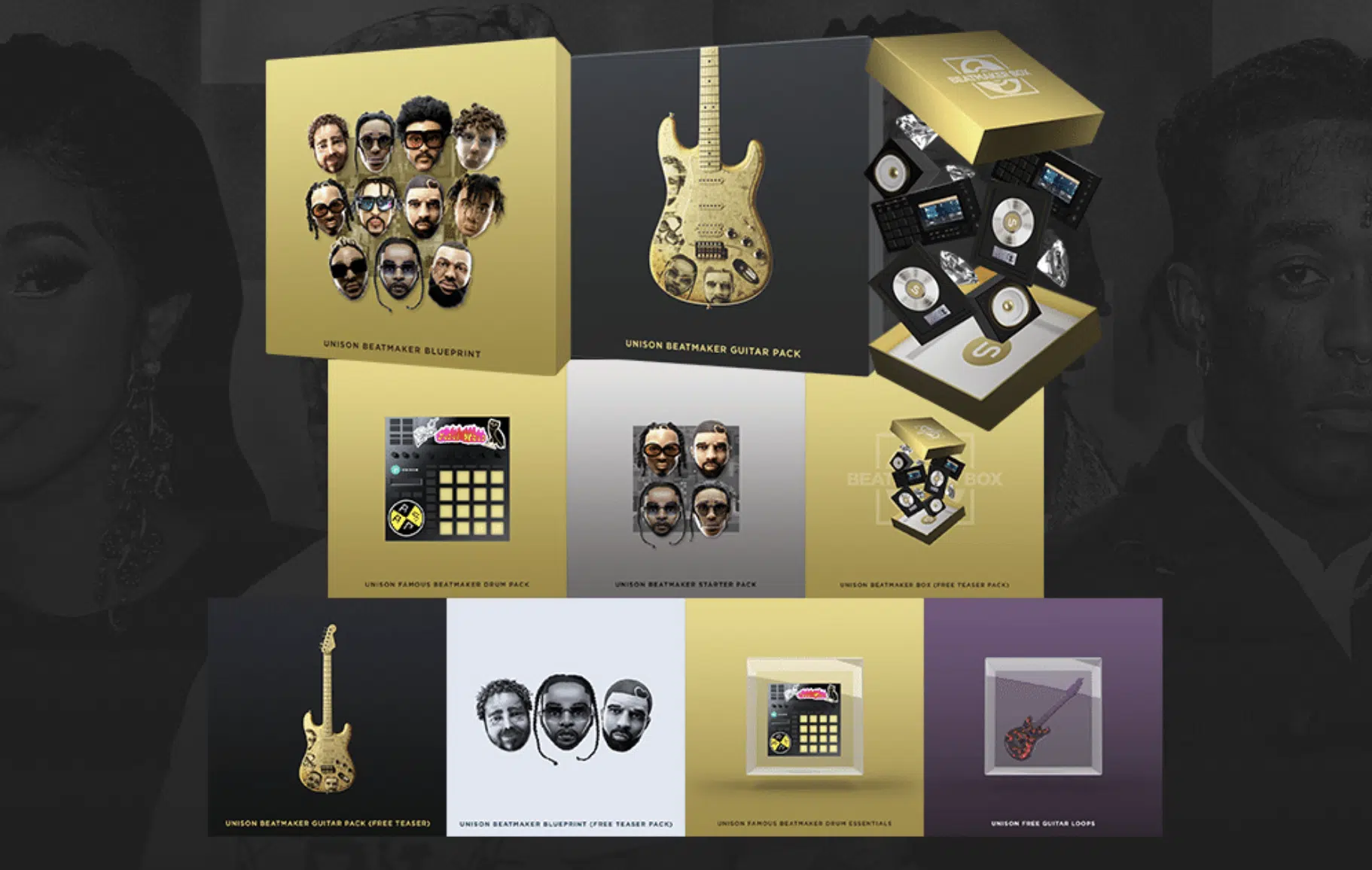
Sample packs give you access to a diverse palette of sounds in which to use in your own music.
Reference tracks can guide help you effectively utilize samples and ensure they complement the overall sonic texture of your track (I call it sample magic).
Analyzing how professional producers manipulate and integrate samples in reference tracks provides insights into:
- Layering techniques
- Processing techniques
- Blending techniques
This enables the creation of unique soundscapes and contributes to the development of a signature sound.
Additionally, reference tracks can highlight the importance of selecting high-quality and genre-appropriate samples.
This ensures that the samples used are cohesive with the track’s revered elements, thereby enhancing the overall production quality.
Plus, it can help you to procure new and exciting musical ideas for your future projects.
Bottom line is, the strategic use of sample packs (informed by reference tracks) can elevate not only your workflow, but your music in general.
It encourages innovation, fosters uniqueness, and ensures a polished and coherent sound design elements.
Techniques for Mixing with Reference Tracks
Mastering the art of mixing (no pun intended) is a pivotal step in the music production process, and the best reference tracks are ideal for helping to refine this skill.
Let’s now dive into how to achieve tonal balance and stereo width and optimize arrangement maps/reference arrangements.
This will help you to be super professional when mixing and mastering.
-
Achieving Tonal Balance and Stereo Width
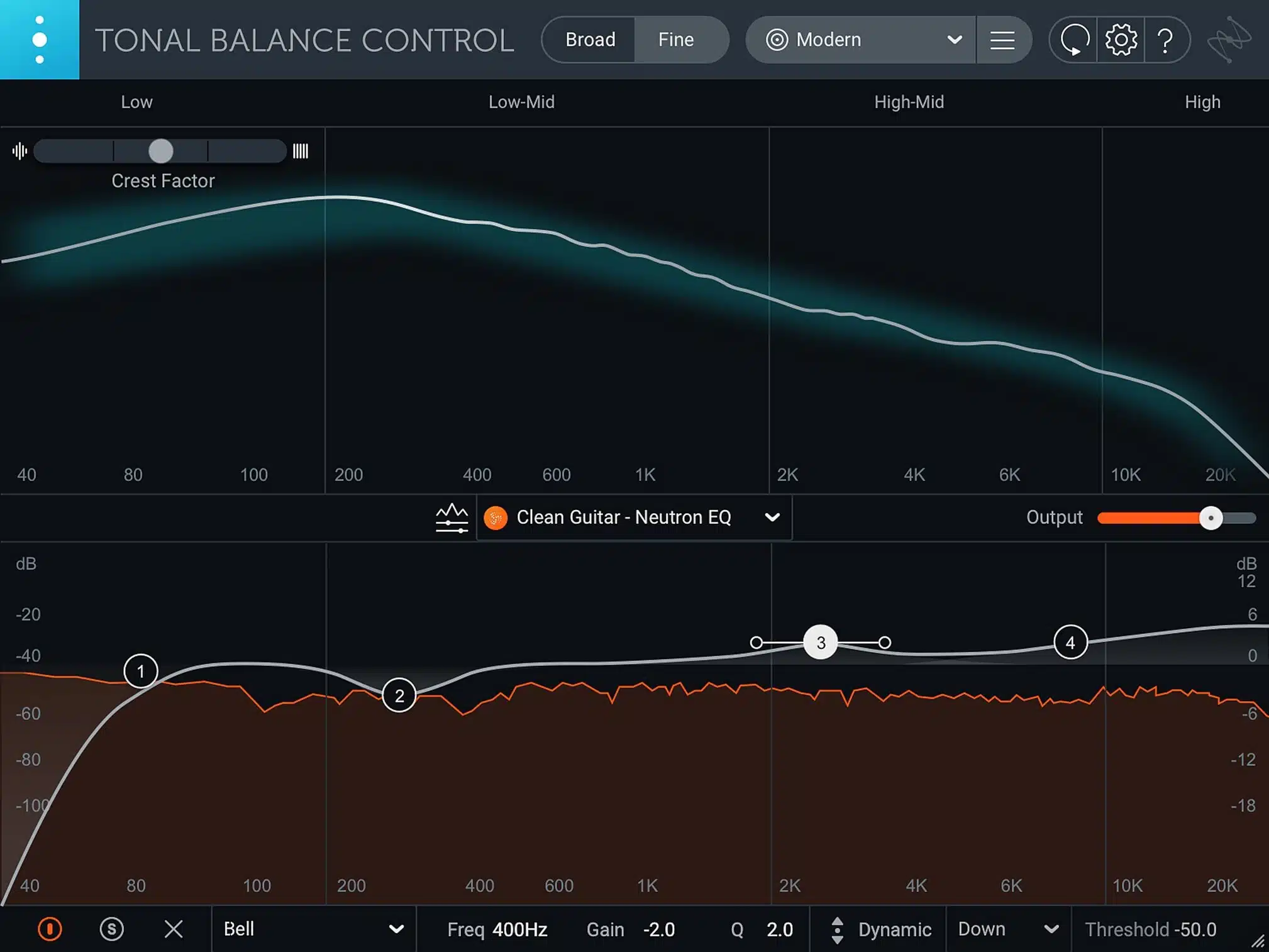
Achieving tonal balance and optimal stereo width are foundational aspects of a professionally-mixed track.
When you use reference tracks, it can help you assess and refine these elements to create an epic mix that is harmonious and spatially balanced.
Analyzing the frequency balance, panning decisions, and stereo imaging of reference tracks provides insights into how all the elements contribute to a sense of space and depth.
This knowledge is essential for crafting a mix that is immersive and three-dimensional.
Also, reference tracks break down the techniques used by professionals to:
- Manage competing frequencies
- Enhance stereo separation
- Maintain phase coherence
These insights are vital for avoiding common pitfalls, like phase issues, and ensuring a mix that is clear, well-defined, and moving in the right direction.
Plus, it can help you to not require a mixing engineer (or, mix engineer) in the future, as you’ll master reference mixing in no time.
Again, it’s crucial that you consider the genre-specific nuances of tonal balance and stereo width.
Different genres have unique sonic characteristics, and reference tracks can guide producers in achieving a sound that is stylistically authentic.
Utilizing reference tracks to achieve tonal balance and stereo width is a renowned process of professional mixing.
It ensures a mix that is balanced, immersive, and genre-appropriate, laying the foundation for a successful track.
If you’d like to discover the job of a mixing engineer, or how to use the Haas Effect to enhance your stereo image, we’ve got you covered.
-
Arrangement Map and Reference Arrangement
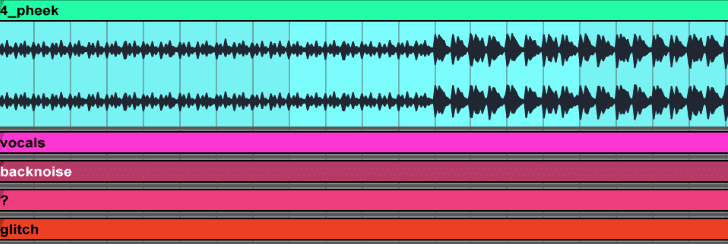
As a music producer, crafting an arrangement that is both compelling and well-structured is crucial.
Utilizing an arrangement map and reference arrangement can significantly assist in achieving this.
These tools provide a visual and auditory guide, respectively, to structure your track effectively; ensuring each section flows seamlessly and cohesively.
Take, for example, a classic hip-hop track…
The reference arrangement might reveal a common structure: an intro, followed by a verse, chorus, another verse, the chorus again, a bridge, and finally, the outro.
By closely analyzing this arrangement in a reference track, you can identify the timing and placement of each section.
This will allow you to construct your track with a similar, proven structure.
Examining the arrangement map of a reference track can uncover the nuances of:
- Transitions
- Breaks
- Fills
These elements are pivotal in maintaining listener engagement.
For instance, noticing how a reference track employs a drum fill to transition from the verse to the chorus can inspire similar techniques in your own tracks.
This will enhance its overall flow and dynamics.
Reference arrangements also provide insights into the layering of elements within each section.
Observing how a reference track introduces and layers all the instruments, present vocals, and effects throughout its progression informs your decision-making in the development of your own work.
Plus, all the other songs and other tracks you’ll create by using a reference track in the future.
This understanding will help you create a dynamic, balanced track, resonating with the listener and meeting professional standards.
An arrangement map and reference arrangement are invaluable tools.
They provide detailed insights and examples to inform and inspire your track’s structure and progression 一 ensuring it is both engaging and professionally crafted.
Reference Track: Final Thoughts
Producing music can be a challenging journey, but as we’ve explored in this article, reference tracks serve as invaluable compasses to guide you through this creative landscape.
They hold the key to unlocking the sonic secrets of the music that moves and inspires us.
As well as provide a framework for balancing elements, crafting immersive soundscapes, and achieving a professional polish.
Reference tracks are more than just inspiration tools; they are a practical tool that can help you enhance your skills and elevate your productions to new heights.
With the knowledge acquired from this article, you are now equipped with the insights and strategies needed to leverage reference tracks effectively.
So you’ll be able to make music that resonates with both precision and impact.
Incorporating tools like these free, Famous Beatmaker Template Essentials can further enhance this learning process.
This pack offers the organized structures of hit tracks across popular DAWs, allowing you to dissect and analyze professional arrangements (just like studying a reference track).
With such resources at your disposal, you can delve deeper into the intricacies of music production and learn the secrets of the masters.
Again, the importance of reference tracks in music production cannot be overstated.
They are the cornerstone that can help mold your sound 一 providing a clear path towards achieving your musical vision.
So go ahead and create impactful music that can change the game.
Until next time…







 40 Chord
Progressions
40 Chord
Progressions

Leave a Reply
You must belogged in to post a comment.